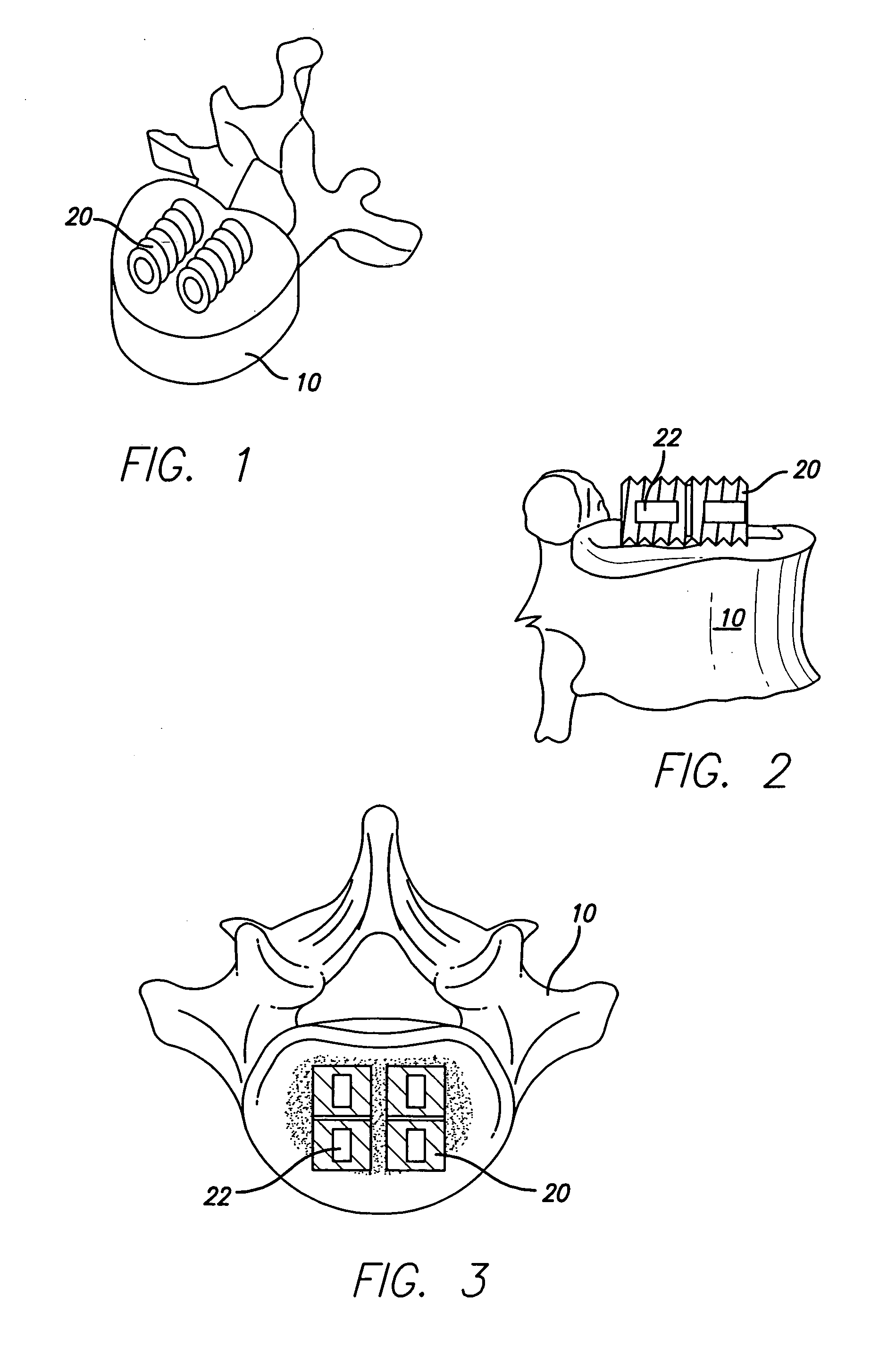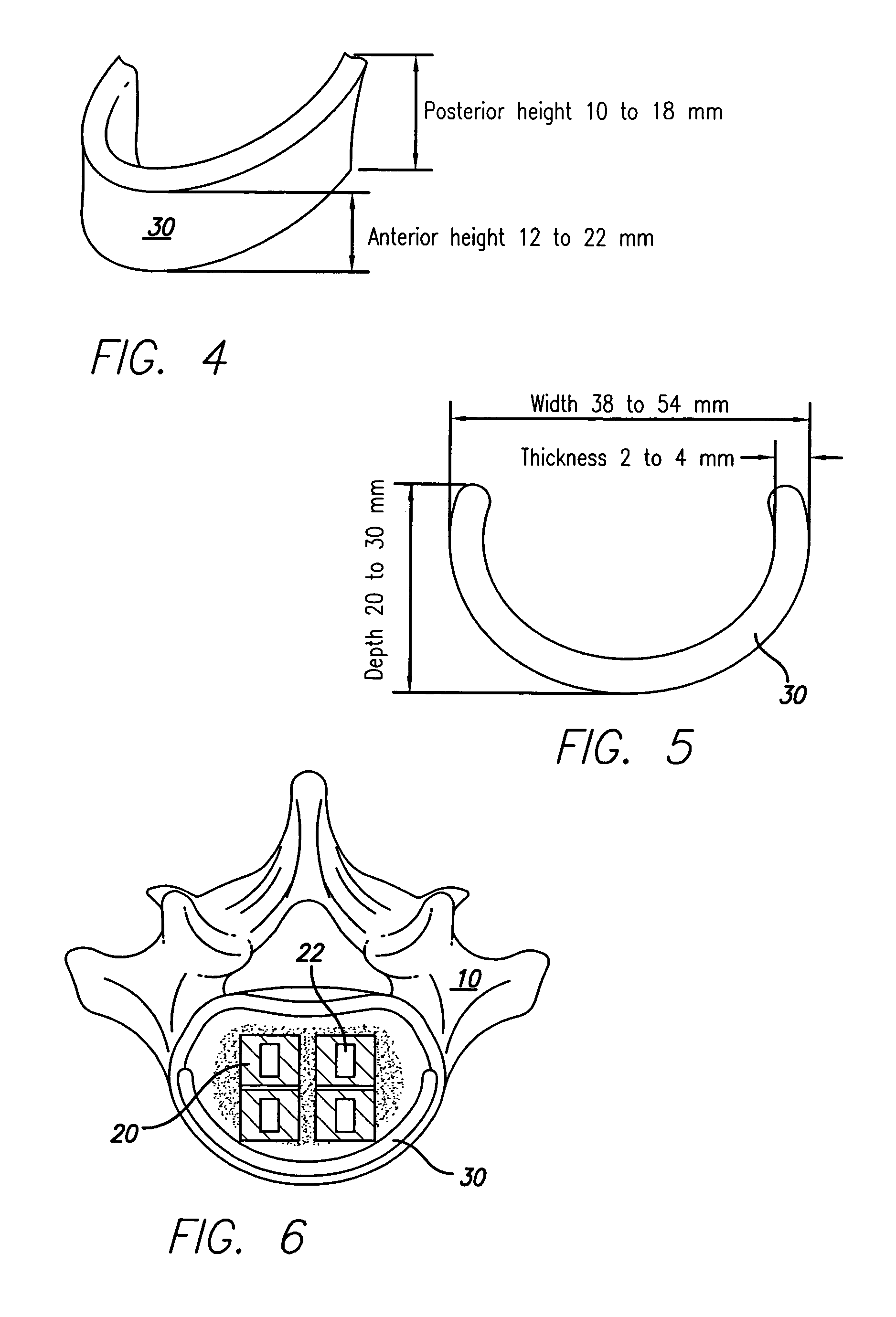Support device for vertebral fusion
a support device and vertebral technology, applied in the field of vertebral fusion support devices, can solve the problems of failure to fuse, loss of disc height, recurrence of often very painful symptoms, etc., and achieve the effect of increasing the success rate of fusion
- Summary
- Abstract
- Description
- Claims
- Application Information
AI Technical Summary
Benefits of technology
Problems solved by technology
Method used
Image
Examples
Embodiment Construction
[0024]The present invention is a novel device, system, and method designed to provide supplemental vertebral body end plate support for devices placed in the anterior lumbar region, such as threaded interbody fusion cages or bone dowels. The present invention generally contemplates two embodiments. One, an allograft, is made from an actual vertebral body. The other embodiment is fabricated from man-made materials such as metal, plastic, or composites.
[0025]Preliminarily, the surgeon will effectively perform an ALIF, typically installing a first support device such as a pair of threaded cages or bone dowels. FIGS. 1, 2, and 3 depict different views of a vertebral body 10 with prior art cages 20 mounted on the vertebral body 10. Typically such cages contain open spaces 22 that permit bone growth throughout cage 20 for a stronger and more stable fusion. After the surgeon installs the cages, dowels, or other such support 20, he will then install a second support. One embodiment of the s...
PUM
 Login to View More
Login to View More Abstract
Description
Claims
Application Information
 Login to View More
Login to View More - R&D
- Intellectual Property
- Life Sciences
- Materials
- Tech Scout
- Unparalleled Data Quality
- Higher Quality Content
- 60% Fewer Hallucinations
Browse by: Latest US Patents, China's latest patents, Technical Efficacy Thesaurus, Application Domain, Technology Topic, Popular Technical Reports.
© 2025 PatSnap. All rights reserved.Legal|Privacy policy|Modern Slavery Act Transparency Statement|Sitemap|About US| Contact US: help@patsnap.com



